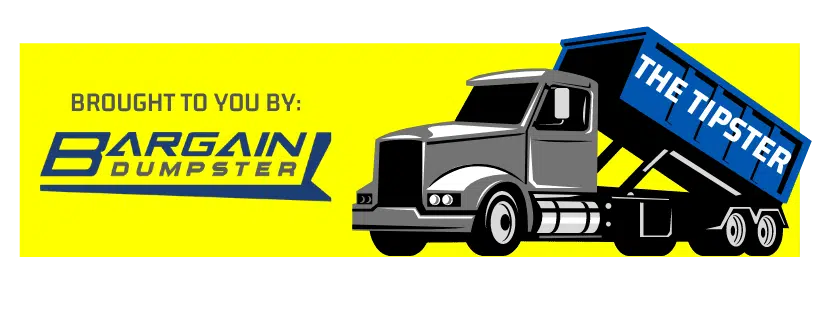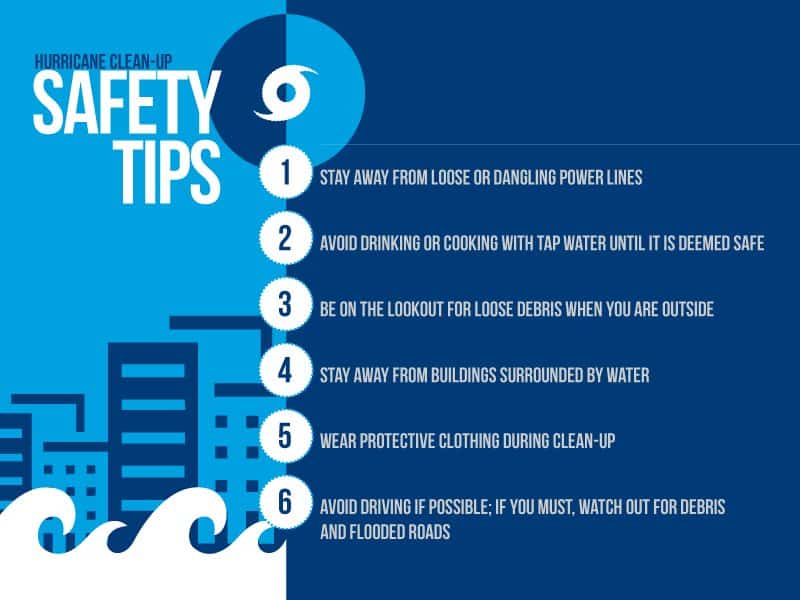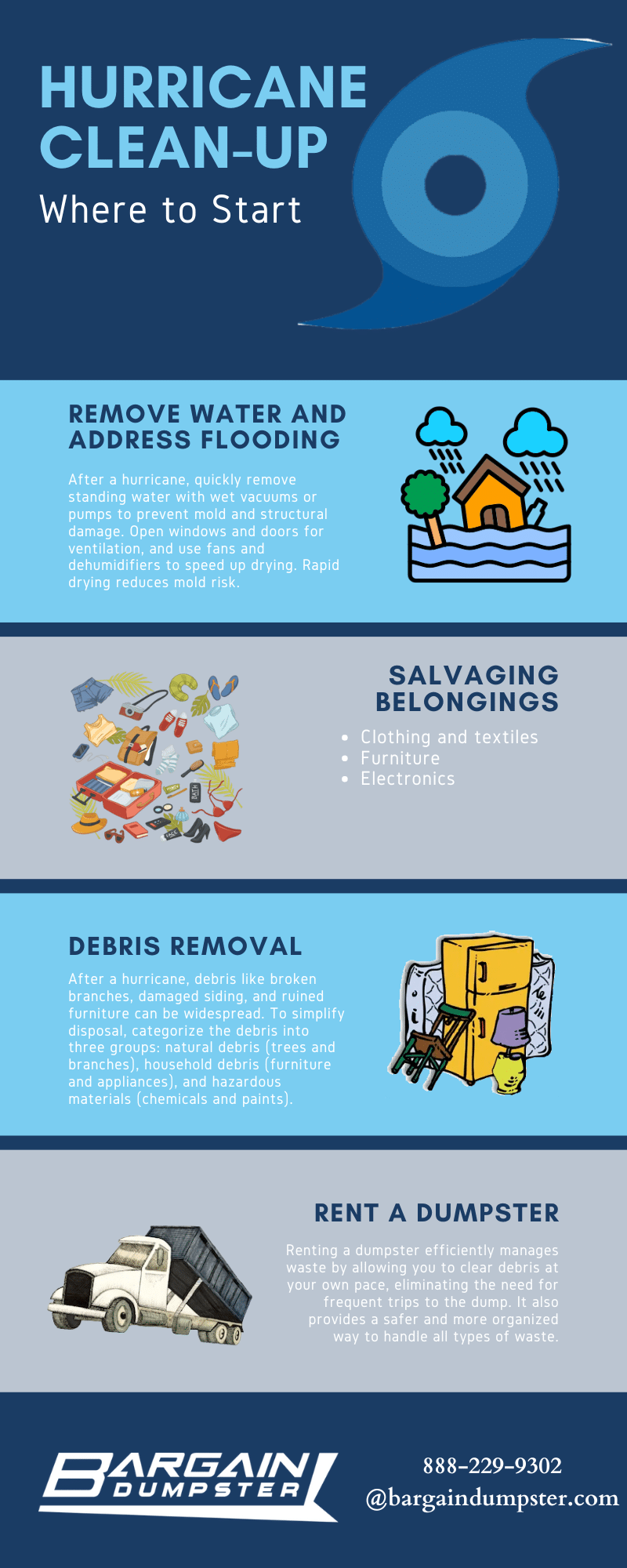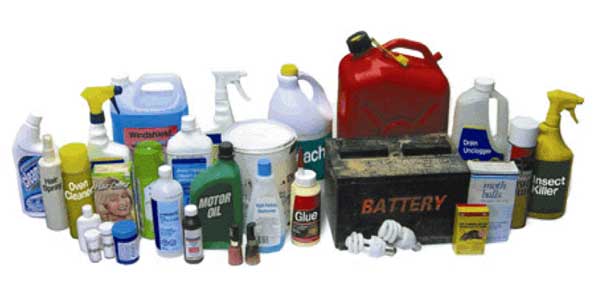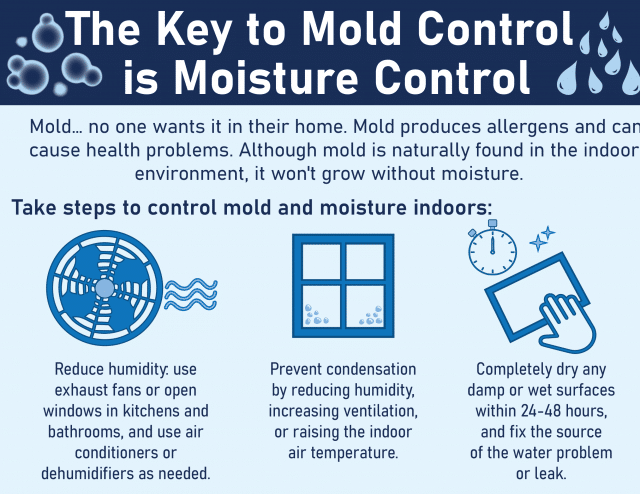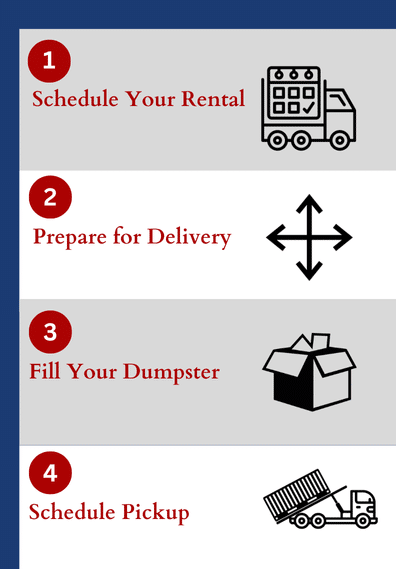Hurricanes can leave a trail of destruction in their wake, and cleaning up afterward can feel overwhelming. Between flooding, broken trees, and damaged belongings, it’s hard to know where to begin. But tackling the mess can make the process smoother and safer.
We will walk you through what to expect after a hurricane, focusing on safe cleanup practices, handling debris, and proper waste disposal. By taking the right approach, you can restore your home and yard without putting yourself at risk.
Prioritize Safety Before Cleanup
Before diving into the cleanup process after a hurricane, safety must come first. The aftermath of a storm can present hidden dangers, so taking the right precautions is crucial. Here’s how to stay safe:
1. Assess Structural Damage
Before entering your home, take a moment to assess the outside. Look for any signs of serious damage, like a sagging roof, leaning walls, or cracks in the foundation. This could mean your home isn’t safe to enter. If you notice any major issues, it’s best to call a professional to inspect the property and ensure it’s stable before entering.
2. Avoid Electrical Hazards
Electrical lines and water don’t mix well, and power outages are common after hurricanes. If you see any downed power lines, keep your distance and report them immediately. Inside the home, avoid touching any appliances or electrical outlets until the power is confirmed safe. If you’re using a generator, make sure it’s placed outside and far away from any windows or doors to avoid carbon monoxide poisoning. This invisible gas can be deadly if it builds up inside your home.
3. Protect Yourself
While cleaning up, you’ll likely encounter a lot of debris, dirty water, and potentially harmful materials. Wear protective gear, including gloves, boots, long sleeves, and masks. This gear will help prevent cuts, infections, or exposure to chemicals and mold. Keep a first aid kit nearby to treat any minor injuries, like scrapes or cuts, right away. Always put your health and safety first during this challenging time.
Staying alert to these risks will make the entire cleanup process safer and more manageable.
Immediate Cleanup Tasks
After a hurricane, getting your home back to normal starts with tackling the immediate mess. Here’s how to prioritize what needs to be done first:
1. Remove Water and Address Flooding
Flooding is one of the most common problems after a hurricane. Standing water can lead to mold and structural damage, so it’s important to get rid of it quickly.
Start by using tools like wet vacuums or water pumps to clear out any standing water. Once the water is gone, open windows and doors to let air circulate. You can also set up fans and dehumidifiers to help dry out the space faster. The sooner everything is dry, the less likely mold will grow.
2. Salvaging Belongings
It’s tough to figure out what can be saved after a storm. Some things may be beyond repair, but many items might just need a good cleaning.
Here are some general tips:
- Clothing and textiles: If they aren’t heavily damaged, you can wash them in hot water with detergent. If mold has started growing, add a bit of vinegar or baking soda to the wash.
- Furniture: Wooden furniture can often be dried and cleaned. Upholstered items like couches may need to be thrown out if they’ve absorbed too much water.
- Electronics: Electronics that have been underwater are usually a lost cause. However, if they’ve just been exposed to some moisture, try drying them out completely before testing.
When in doubt, it’s better to discard items that could pose a health risk or may not be safe to use anymore. Be sure to check with your local waste management service to see how to properly dispose of damaged belongings.
3. Debris Removal
Debris can be scattered everywhere after a hurricane. You might find broken branches, damaged siding, shingles, or even ruined furniture in your yard or home. Separating debris into categories will make disposal easier:
- Natural debris like trees and branches
- Household debris such as furniture, appliances, and drywall
- Hazardous materials like chemicals and paints
Renting a dumpster is an efficient way to manage all this waste. A dumpster rental allows you to clear debris from your property at your own pace without having to worry about constant trips to the dump. It’s also safer and more organized to handle all types of waste in one go.
At Bargain Dumpster, we offer a variety of dumpster sizes to fit your needs, so whether you’re clearing out the inside of your home or hauling away tree branches, we’ve got you covered.
Hazardous Waste
Cleaning up after a hurricane isn’t just about picking up debris and removing water. Sometimes, there are hazardous materials that need special care. Here’s how to handle them safely:
1. Identifying Hazardous Materials
After a storm, it’s not uncommon to find dangerous substances mixed in with the rest of the mess. Items like household cleaners, paint, automotive fluids, and pesticides can spill or get damaged. These are considered hazardous materials because they can harm you or the environment if not handled properly.
Be on the lookout for the following:
- Chemicals: Bleach, cleaning agents, or fuel containers.
- Paint: Old cans that might have been stored in your garage or shed.
- Batteries: Car or boat batteries that may have been flooded or damaged.
If you come across anything you’re unsure of, treat it as hazardous and be cautious.
2. Proper Disposal Methods
You can’t just throw hazardous waste in the trash or a dumpster. These materials require special handling to prevent harm. Here’s what to do:
- Check Local Guidelines: Your city or county likely has specific rules about disposing of hazardous materials. Some areas even offer collection days or specific drop-off locations where you can take these items.
- Use Special Containers: If you need to move hazardous waste, do so carefully. Seal any open containers and use plastic bins or bags to prevent leaks.
- Contact a Waste Disposal Service: If you’re dealing with a large amount of hazardous material, you might need to hire a professional service that specializes in this type of waste.
Handling hazardous waste correctly keeps your cleanup process safe and prevents damage to the environment. It’s one extra step, but it’s worth it to protect yourself and your community.
Mold Prevention and Remediation
The Importance of Quick Action
After a hurricane, mold can start growing fast—within 24 to 48 hours—especially in damp, warm areas. That’s why it’s crucial to act quickly. Mold doesn’t just damage your home; it can also cause health problems, like allergies or respiratory issues. Even if you can’t see it, mold may be hiding behind walls, under floors, or in insulation. Take a few minutes to check these areas and remove anything that looks or smells suspicious.
Cleaning and Disinfecting Areas
If you catch mold early, you can clean it up yourself. Start by wearing protective gear like gloves, a mask, and goggles. You’ll need a mixture of water and either bleach or a mold-killing cleaner. Scrub the affected surfaces—like walls, floors, or furniture—until you remove all visible mold. Once you’ve cleaned an area, dry it out as quickly as possible using fans and dehumidifiers to stop the mold from coming back. Also, be sure to air out your home by opening windows.
When to Call in a Professional
Sometimes, mold problems can be bigger than you can handle. If you notice mold covering a large area or if it’s hidden behind drywall or under floors, it’s best to call in a professional. Experts have specialized equipment to clean deep mold and can ensure that it doesn’t return. If you try to tackle big mold issues on your own, you could make the problem worse by spreading mold spores to other parts of your home. So, when in doubt, get professional help to stay safe and keep your home mold-free.
Yard and Exterior Cleanup
After a hurricane, the outside of your home can take a serious beating. From fallen trees to damaged outdoor structures, it’s important to get everything cleaned up safely and efficiently. Here’s how to tackle your yard and exterior cleanup:
1. Clearing Downed Trees and Branches
Hurricanes often bring strong winds that knock down trees, break branches, and scatter debris everywhere. Safety is the top priority here. Start by assessing any downed trees or large limbs in your yard. If the tree is still partially standing or close to power lines, it’s best to call a professional. Attempting to move large or heavy trees yourself can be dangerous.
For smaller branches and debris, grab some gloves and a good saw. You can cut up the larger limbs into smaller, manageable pieces. Just be sure to take your time and use the right tools, like a handsaw or chainsaw. And remember, always wear protective gear like goggles and gloves to avoid injuries.
If you’re dealing with a lot of tree waste, consider renting a dumpster to handle the debris. This will save you the hassle of making multiple trips to the local dump.
2. Cleaning Up Outdoor Structures
Your shed, fence, patio, or even your deck may have suffered some damage during the storm. It’s a good idea to walk around and inspect all your outdoor structures. Look for loose boards, cracks, or other signs of damage.
For fences, check if any sections have fallen over or are wobbly. You might be able to fix these yourself with some nails and a hammer, but if the damage is extensive, calling a contractor might be necessary. The same goes for sheds—repair what you can, but don’t hesitate to bring in a professional if the structure seems unsafe.
Outdoor furniture and decorations may also need some attention. You can easily clean and disinfect items with a solution of water and mild soap, especially if they’ve been exposed to floodwater.
Prioritizing Repairs
It’s tempting to fix everything at once, but it’s better to prioritize. Start with any repairs that will prevent further damage. For example, if you have a leaking roof or a broken fence, those should be first on the list. Other tasks, like sprucing up the garden or repainting the patio, can wait until the major issues are handled.
Taking a structured approach to yard and exterior cleanup will help make the process smoother. With a bit of patience and the right tools, you can get your outdoor space back to its pre-storm condition.
Waste Disposal Options
After a hurricane, one of the biggest challenges is figuring out how to handle the waste left behind. It can feel overwhelming, but understanding your options makes it easier. Let’s break down the best ways to dispose of debris and why a dumpster rental might be your best bet.
1. Dumpster Rentals for Post-Hurricane Cleanup
A dumpster rental is one of the most efficient solutions for managing waste after a hurricane. Instead of making multiple trips to the dump, you can simply toss everything you need to get rid of into one large container. This saves you time and hassle, letting you focus on cleaning up your home and yard.
Why Choose a Dumpster?
- Convenience: You’ll have a designated space for all your debris right on your property. This means no more piling everything up in your yard or trying to fit it into your car.
- Variety of Sizes: Dumpsters come in different sizes. Whether you have a small amount of debris or a massive pile of fallen branches and damaged furniture, there’s a dumpster that fits your needs.
- Cost-Effective: Renting a dumpster can be cheaper than multiple trips to the landfill, especially if you have a lot to dispose of. Plus, you avoid fuel costs and wear and tear on your vehicle.
Choosing the Right Size Dumpster
To pick the right dumpster size, think about the amount and type of waste you’ll be tossing out. Here are some general guidelines:
- 10-yard dumpster: Ideal for small cleanups, like a few pieces of furniture or some yard waste.
- 20-yard dumpster: Good for medium-sized jobs, like cleaning out an entire room or removing debris from a small yard.
- 30-yard dumpster: Perfect for larger projects, such as a complete home renovation or major storm cleanup.
If you’re unsure about which size you need, don’t hesitate to ask your dumpster rental provider for help. They can guide you based on the details of your cleanup.
2. Scheduling Pickup and Disposal
Once your dumpster is full, it’s time to schedule a pickup. Most rental companies make this process simple. Here are a few steps to follow:
- Contact Your Rental Provider: Call or visit the company’s website to arrange for pickup. Some services allow you to schedule online, making it even easier.
- Be Clear About Your Needs: Let them know when you want the dumpster picked up and if you have any special instructions for them.
- Local Guidelines: Familiarize yourself with local rules regarding waste disposal. Some areas may have specific regulations about what can and cannot be thrown away, so check with your local waste management authority.
By using a dumpster rental, you can streamline your post-hurricane cleanup and make the process less stressful. You’ll have a convenient way to dispose of debris, allowing you to focus on restoring your home and getting back to normal. And remember, if you need assistance, Bargain Dumpster is here to help with all your rental needs!
Long-Term Restoration
1. Restoring Your Home
After tackling the immediate cleanup, it’s time to think about restoring your home. This step is crucial to getting your space back to normal and making sure it’s safe and comfortable.
Assess the Damage
Start by carefully checking for any damage left from the storm. Look for issues with your roof, walls, and floors. If you find water damage, it might be time to replace materials like drywall or flooring. Make a list of everything that needs fixing, as this will help you plan your repairs.
Prioritize Repairs
Not all repairs need to be done at once. Focus on areas that can affect your safety first. For example, if your roof is leaking, fix that before moving on to less urgent projects like painting or landscaping. This way, you can ensure your home is secure and comfortable as you continue restoring it.
Budgeting for Repairs
Restoration can be expensive, so it’s a good idea to budget for the work. Get quotes from local contractors for bigger jobs like roofing or electrical repairs. If you’re planning to do some of the work yourself, research costs for materials and tools. Creating a clear budget will help you avoid surprises down the road.
DIY vs. Professional Help
Some repairs can be done by yourself, especially if you have basic skills and tools. Painting, landscaping, and minor repairs might be easy enough to tackle on your own. However, for larger jobs, like structural repairs or electrical work, it’s best to hire a professional. This ensures the job is done right and keeps your home safe.
2. Prevention and Preparation for Future Hurricanes
Once your home is restored, it’s important to think about how to prepare for future hurricanes. Here are some tips to keep your home safe in the next storm.
Create an Emergency Plan
An emergency plan is essential for you and your family. Decide where you’ll go if you need to evacuate and keep a list of important phone numbers. Make sure everyone knows what to do in case of a storm. Having a plan in place can reduce stress when a hurricane approaches.
Stock Up on Supplies
Gather emergency supplies in advance. This includes things like bottled water, non-perishable food, flashlights, batteries, and a first aid kit. Store these items in a safe, accessible place. Don’t forget to include necessary medications for family members and pets.
Secure Your Property
Before the next storm hits, take steps to secure your home. This might include installing storm shutters or reinforcing your roof. Trim back any overhanging branches that could fall during a storm. Keeping your yard tidy can help prevent debris from causing damage.
Stay Informed
Stay updated on weather forecasts and local alerts. Sign up for emergency alerts on your phone so you can receive real-time information about storms. Knowing what’s coming can help you react quickly and safely.
Consider Insurance
Review your homeowner’s insurance policy to ensure you’re covered for hurricane damage. If you live in a hurricane-prone area, it may be worth investing in additional coverage. Understanding your policy can help you feel more secure when a storm is approaching.
Restoring your home after a hurricane takes time and effort, but it’s also an opportunity to make improvements for the future. By being proactive and prepared, you can help protect your home and loved ones when the next storm arrives. Remember, Bargain Dumpster is here to support you through the cleanup and restoration process, making your journey a little easier!
